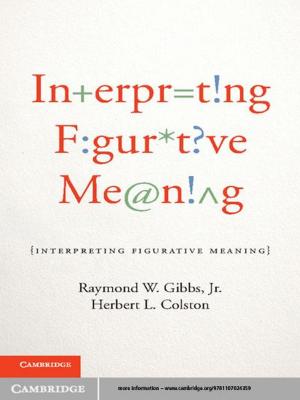A Linguistic History of Ancient Cyprus
The Non-Greek Languages, and their Relations with Greek, c.1600–300 BC
Nonfiction, Reference & Language, Foreign Languages, Fiction & Literature, Literary Theory & Criticism, History| Author: | Philippa M. Steele | ISBN: | 9781107502932 |
| Publisher: | Cambridge University Press | Publication: | November 7, 2013 |
| Imprint: | Cambridge University Press | Language: | English |
| Author: | Philippa M. Steele |
| ISBN: | 9781107502932 |
| Publisher: | Cambridge University Press |
| Publication: | November 7, 2013 |
| Imprint: | Cambridge University Press |
| Language: | English |
This pioneering volume approaches the languages and scripts of ancient Cyprus from an interdisciplinary point of view, with a primarily linguistic and epigraphic approach supplemented by a consideration of their historical and cultural context. The focus is on furthering our knowledge of the non-Greek languages/scripts, as well as appreciating their place in relation to the much better understood Greek language on the island. Following on from recent advances in Cypro-Minoan studies, these difficult, mostly Late Bronze Age inscriptions are reassessed from first principles. The same approach is taken for non-Greek languages written in the Cypriot Syllabic script during the first millennium BC, chiefly the one usually referred to as Eteocypriot. The final section is then dedicated to the Phoenician language, which was in use on Cyprus for some hundreds of years. The result is a careful reappraisal of these languages/scripts after more than a century of sometimes controversial scholarship.
This pioneering volume approaches the languages and scripts of ancient Cyprus from an interdisciplinary point of view, with a primarily linguistic and epigraphic approach supplemented by a consideration of their historical and cultural context. The focus is on furthering our knowledge of the non-Greek languages/scripts, as well as appreciating their place in relation to the much better understood Greek language on the island. Following on from recent advances in Cypro-Minoan studies, these difficult, mostly Late Bronze Age inscriptions are reassessed from first principles. The same approach is taken for non-Greek languages written in the Cypriot Syllabic script during the first millennium BC, chiefly the one usually referred to as Eteocypriot. The final section is then dedicated to the Phoenician language, which was in use on Cyprus for some hundreds of years. The result is a careful reappraisal of these languages/scripts after more than a century of sometimes controversial scholarship.















